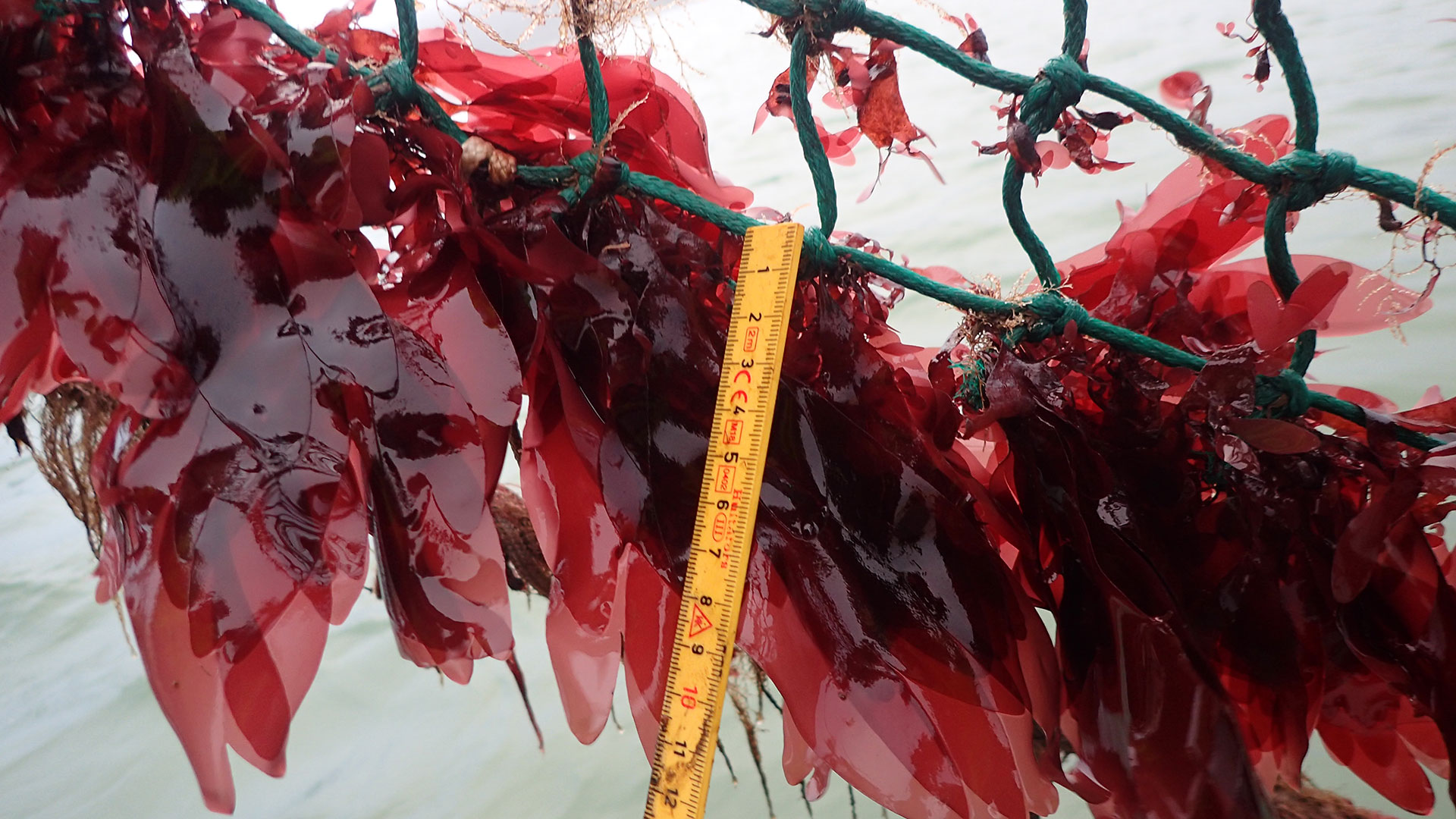Dulse production (WP3)
The aim of work package 3 is to bring dulse production towards a stable production of commercial quantities.

Background and aim
Cultivation of dulse relies on reliable hatchery techniques as well as optimized grow out strategies – either in open water or on land.
A primary key to dulse cultivation is spore accessibility, which traditionally relies on collection from wild beds within the natural fertility window. However, wild collection is expensive and not considered sustainable and thus, proper in-house seedstock control is essential to remove this reliance on wild harvest and at the end develop sustainable production methods.
The bottlenecks identified to secure a reliable spore supply are: 1) reliable fertility induction and, 2) the establishment of a seed bank for all-year use.
Additionally, innovative hatchery and seeding methods will be developed to maximise spore use and seeding quality.
Grow out will be developed with new systems at sea and on land.
Tasks
WP3 will bring dulse production towards a stable production of commercial quantities by the following five tasks:
- Out-of-season fertility induction.
- Seed bank for year-round seed supply.
- Innovative hatchery and seeding methods.
- Cultivation systems at sea and on land.
- Technology development.
Partners
- DTU Aqua (lead of WP3)
- Ocean Rainforest
- Pure Algae
- Kerteminde Seafarm.
Production of dulse – from spore to harvest







